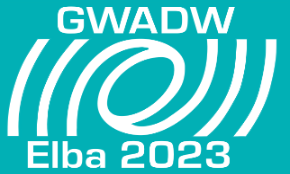Speaker
Description
To preserve the unquestionable improvements deriving by cooling down the mirrors at cryogenic temperature (LT), the methods adopted to mitigate all possible noise sources for gravitational wave detection need to be compliant with cryogenics.
Electrostatic charging is an already known limiting noise source. At room temperature, a mitigation method proposed by the LIGO collaboration has been successfully applied. If this method will be considered to mitigate charging at LT, a significantly thick condensed N2 layer will develop on the mirrors, severely affecting detection. The development of a new technology is then mandatory to preserve the performances envisaged by cryogenics.
Here we present a novel mitigation method compatible with cryogenics. By performing electrostatic measurements on a Si substrate, we show how to neutralize both a positive and negative charge by properly tuning the energy of an electron beam impinging on the sample surface. A study of irradiation parameters is given, highlighting the strict correlation between the surface voltage, monitored during the neutralization process, and the secondary electron emission properties intrinsic of the material. Preliminary XPS and Raman investigations have shown that, within the detectability limit, electron irradiation below few hundreds’ eV does not induce observable structural defects on the substrate.

